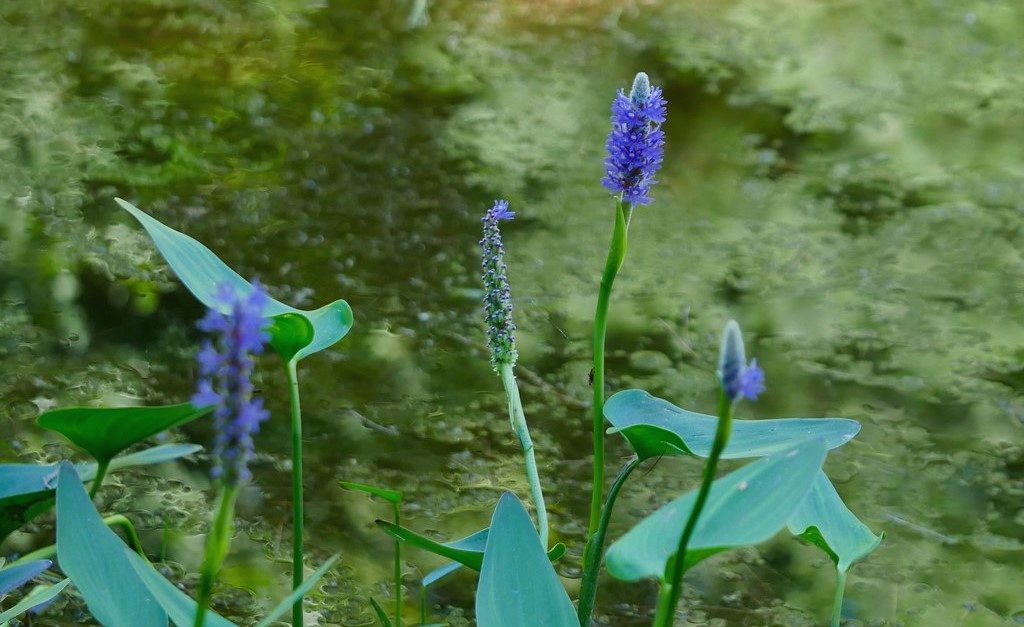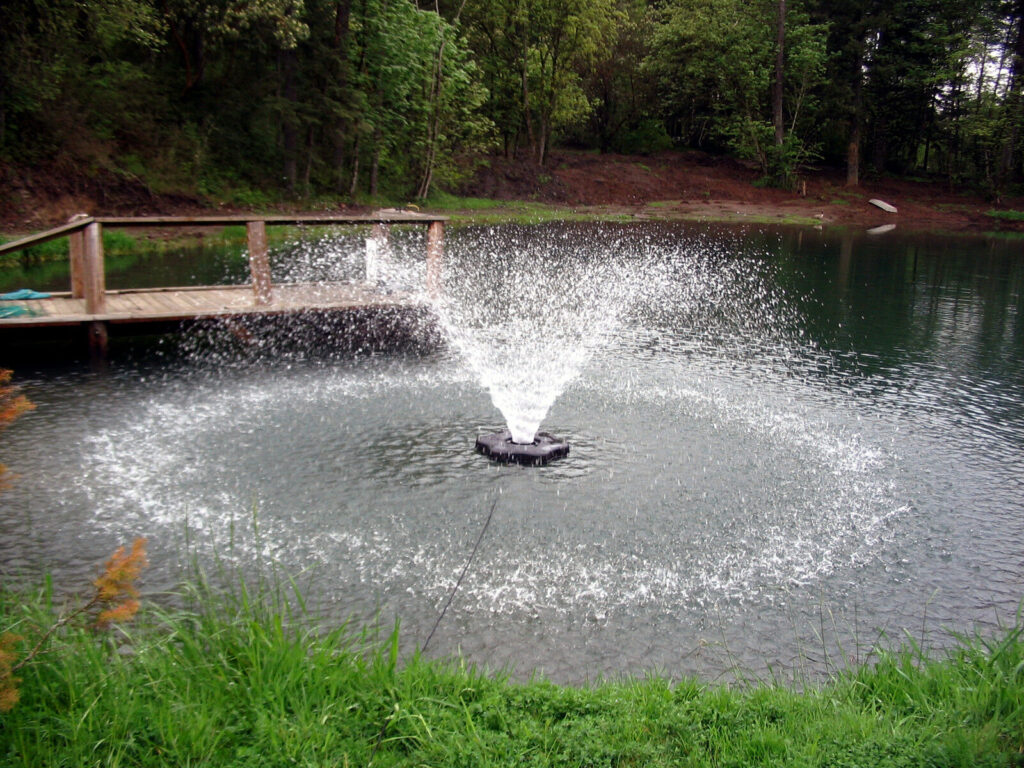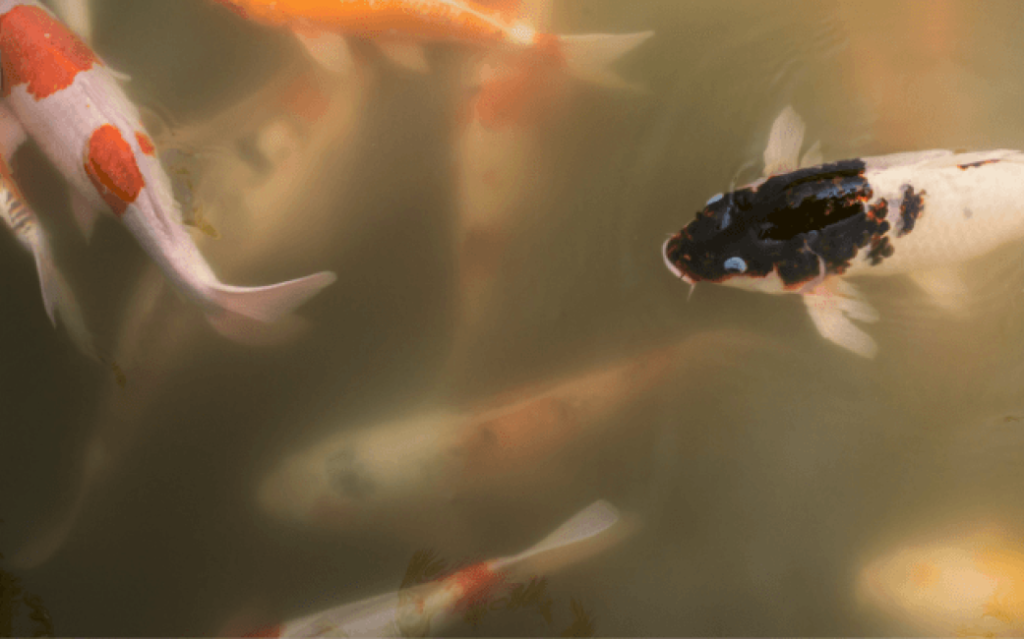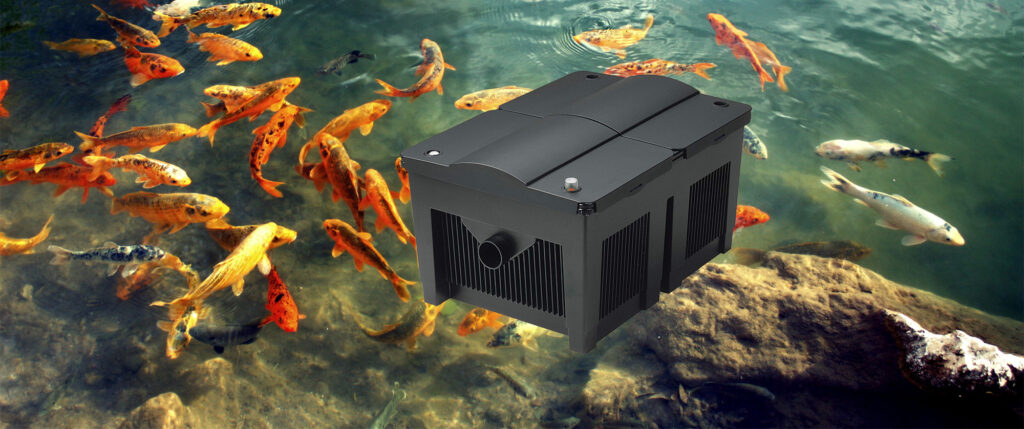
So winter is over, and spring has arrived! With spring comes warm, steady temperatures that feel great. However, amid all the nice weather, your pond will likely start to undergo changes; some of which are unpleasant. One of these problems is the emergence of pond algae. There are different types of pond algae. Some of the types include green water algae, cyanobacteria or Blue-Green algae, string algae, euglena algae, and chara algae. One way to ensure you don’t fall victim to this problem is year-round maintenance and a proactive approach using natural and man-made methods. The main goal of pond algae control is to reduce the nutrients in the water that contribute to unwanted algae growth. Some hacks include avoiding grass clippings, leaves, fertilizers, and other nutritious organic debris in the pond. You can also plant useful vegetation in and around the edges of the pond to stabilize the bank, limit erosion areas, and prevent the nutrients from entering the pond. In this post, we will consider in-depth information about the different types of pond algae as well as the tip for controlling and preventing them from appearing in the pond. Read on to find out more!
Algae belong to the kingdom Protista and are largely aquatic organisms that are usually completely photosynthetic. However, they are different from plants because they lack true roots, leaves, and gametes. These micro-organisms can vary widely in size. There are algae that are less than two micrometres to more than 200 feet tall!
From research, there are eight major groups of algae. These are Blue-Green algae (Cyanobacteria), diatoms, Green algae (Chlorophyta), Euglenophyta, dinoflagellate, Golden algae, Brown algae, and Red algae.
Knowing the type of alga that is present in your pond is exceptionally important. For example, the presence of cyanobacteria usually indicates stagnant waters with low dissolved oxygen levels and too many nutrients (most likely from fertilizer run-off). In contrast, green algae generally indicate good (or at least acceptable) water quality. Diatoms are naturally present in virtually every body of water, from the vast ocean to your little pond to moisture that has collected on a leaf, and are truly incredible microscopic organisms that are responsible for producing more oxygen than all of Earth’s rainforests combined. In fact, it is estimated that 25%-40% of our oxygen is manufactured by diatoms, or as much as every third breath that we breathe!
However, it is important to note that too much of any type of algae (with the exception of diatoms!) can be harmful, as they may lead to algal blooms and fish deaths. This is why identifying what algae is present in your pond, and taking appropriate steps to control its growth when necessary, makes up an important aspect of good pond and fish keeping.
Further you will find detailed information about the most widespread Algae types that can be found in the ponds:
Green algae, belonging to the family Chlorophyta, are the most diverse group of algae encompassing over 7,000 species. These algae are present in most healthy pond and lake ecosystems, as they are at the base of the food web. Their chloroplasts contain both chlorophyll A and B, accounting for their typical bright green coloration, though they may also be various hues of yellow. In addition to providing food for a variety of creatures from fish to insects to waterfowl, green algae are also primary producers, generating oxygen and energy/nutrients that are then utilized by organisms that are unable to produce their own. Conversely, as previously mentioned, too much green alga (often as a result of nutrient-rich water) can result in eutrophication, ultimately resulting in depleted oxygen levels and the death of your pond’s inhabitants, especially in warmer summer months. It’s important to control the spread of green water algae before it gets to this point, with the most effective treatments being UV clarification, water dyes, and good filtration and maintenance, and other methods that we will discuss in this article.
As indicated by its name, cyanobacteria, while commonly referred to as blue-green algae, is not a true algae but rather a type of bacteria that looks deceivingly similar to algae. They prefer shallow, warm, still water that is rich in nutrients, in other words, they thrive in unhealthy, low quality aquatic ecosystems! They typically form dense, scum-like floating mats on the water’s surface and can range in color from the characteristic blue-green to green, yellow, purple, or brown. If your pond or lake has a strong, unpleasant odor and algae-like mats that are viscous and slimy, you likely have a cyanobacteria bloom. Another way to determine whether you have an overabundance of cyanobacteria is to conduct a water quality test – poor water quality with low oxygen and high nitrogen levels are a decent indicator of cyanobacteria presence, particularly if accompanied by a foul smell and dead or dying/unhealthy fish. When testing your water, be sure to wear protective clothing such as rubber gloves and waders – cyanobacteria contain various toxins that are harmful if touched or ingested. Different types of cyanobacteria present different health hazards, so be sure to minimize your exposure and thoroughly clean yourself and your clothing if you come into contact with any.
String algae, also called filamentous algae, are single-celled organisms that link together to form long strings that in turn intertwine and form mats. Still water, plenty of sunlight, and the proper concoction of nutrients give rise to this alga. It starts, by forming on rocks and substrate at the bottom of the water and then rises to the water’s surface as it links together, grows, and oxygen bubbles collect within the hair-like fibers, creating buoyancy. Belonging to the chlorophyta family and therefore a variety of green algae, string algae are most commonly green but can also be shades of yellow or brown. Their propensity to colonize into mats can create issues such as clogging pond water filters and pumps, blocking sunlight, consuming dissolved oxygen, generating ammonia (and then converting that into potentially harmful nitrates and nitrites), and ultimately depleting water quality.
Typically green or red, this type of algae is often quite alarming – and for good reason. When euglena is present, you typically won’t know it until a bloom occurs, often bright crimson in color. These blooms are incredibly toxic and will result in fish and vegetation die-offs unless brought under control.
Chara, or muskgrass, also belongs to the green algae family. This type of alga is often mistaken for a plant because they possess structures that look quite similar to leaves and stems. However, these are not true leaves or stems, nor does it possess reproductive structures (such as ovum or flowers). It’s not known to be overly detrimental to pond health, other than producing a pungent odor similar to that of garlic, giving rise to the name muskgrass, and, like most algae, being prone to overgrowth.
Algae is one of the most talked-about topics among new pond owners. Controlling algae is usually more of a problem for new ponds. A new pond does not have the proper balance of plants, animal life, and general biological function.
One of the most important things that you can do when setting up a new pond is to get the proper equipment installed. The pond pump you install should move at least 1/2 of the total pond volume for a water garden. The term “water garden” is assumed to be a pond with lots of plants and some fish. A koi pond usually has few plants and large fish requiring more filtration than a water garden. This type of pond is better off moving at least the full volume of the pond each hour.
Besides moving the water, you also want to filter the water. The pump should move water through a filter that is sized for your pond. Biological filtration takes several weeks or months to mature to the point that it makes a major improvement on your water quality. The filter needs to run 24 hours a day 7 days a week to work.
If you have a water garden and not a koi pond, then make sure you have the right types and numbers of plants in the pond. Anacharis or other underwater plants and floating plants remove excess nutrients from the pond by absorbing these nutrients for their own growth and starving the algae for its food source. Also provide approximately 2/3 surface coverage using water lilies, floaters (like Water Lettuce or Water Hyacinth), or other plants that shade the surface of the water. These plants reduce the amount of sunlight that penetrates the pond; this helps keep the water cooler and starves the algae for sunlight.
Even though you have set up your pond using the right components, have added the proper type and number of plants, and do not have an excessive number of fish, you could still have some algae. This is especially true when a pond is young. Other methods of algae control may be called for during the first few years of a pond. As a pond matures, the algae get less and less and may no longer be a problem.
Some debris buildup in the pond bottom is normal. As long as this sludge is no more than 1/4 inch or so, physical removal is not necessary. In a properly constructed pond, this debris ends up in a fairly small area where it can be removed when necessary.
Course material like string algae and dead leaves can be removed with a net. A skimmer net or algae net does a good job of this. If the debris is too fine to be removed with a net then a pond vacuum works well.
Using the following products should reduce the sludge and keep it to a minimum.
There are several natural and highly effective pond algae control methods you can use, and in this section, we will consider some of these methods.

The main goal of a successful algae control plan is to limit and reduce the nutrients in the water that can cause unwanted algae growth. Avoid grass clippings, leaves, fertilizer and other nutrient-loaded organic debris from getting into your water body. Limit mowing around the edges of your lake or pond to help establish a protective vegetative buffer. You can plant beneficial vegetation in and around the edges of your lake or pond to stabilize the bank, help reduce erosion areas and keep nutrients from entering the waterbody. Aquatic plants such as pickerelweed, sedges, and rushes often add beauty as well as provide nutrient absorption to a shallow area within a body of water that is partially wet.
Biological augmentation can significantly improve pond water quality by utilizing naturally occurring microbes and enzymes that aid in the maintenance of healthy water ecosystems. The dosing of these naturally-occurring micro-organisms boosts the natural populations in your ponds, helping to reduce the accumulation of nutrients and organic sludge further, thus removing the primary food source for the algae.
Similarly to using plants to prevent algae from growing, there are plenty of animals you can add to your pond that will directly feed on algae. Add a few tadpoles or some aquatic pond snails to your pond and keep an eye on them as they grow. They should begin eating the algae in your pond, as well as bringing a little more life to it.
When looking to prevent algae blooms, you must focus on phosphorus, which is the primary limiting nutrient in the proliferation in nuisance and harmful algal blooms. A highly effective, lanthanum-modified clay product can permanently remove phosphorus from the water column and lock all available phosphorus in the muck on the pond’s bottom. By binding all available phosphorus in your pond, it is no longer available as a food source for algae blooms.
One of the best practices for helping to maintain your water and prevent the accumulation of nutrients that could lead to excessive algae is to install and continuously run a submersed air diffused or floating surface pond aeration system. Aerators increase diffused oxygen in the water, which in turn supports and encourages the growth of beneficial aerobic bacteria. This beneficial bacteria breakdown organic matter and consume excess nutrients which helps to balance and improve water quality and reduce algae blooms. The benefits of aeration to a lake or pond are actually higher at night, so running your aeration continuously is highly recommended.
If you have fish in your pond, you should only feed them the amount of food that they can consume in around 5 minutes. If you feed them more than this, the excess food will drift to the bottom and rot, which can be a catalyst for algae growth. If you’re unsure about how much to feed your fish, check the instructions on your fish food for a rough guide. You should be feeding your fish once a day with a small sprinkling of food. Watch your fish for 5 minutes after you feed them to see how much food is left over and adjust accordingly.
The easiest way to clean algae from the top of a pond is simply lifting it up and off. Use a skimmer or algae net to skim the surface of your pond, pulling the algae free and removing it from the pond. This may take a while but will give you immediate results when it’s done.
Although this is a very quick solution, it’s not one that will work long-term. Removing the algae won’t stop it from growing back.
One of the main reasons to invest in a UV pond clarifier is to remove pond algae causing green pond water. The strong UV light emitted will destroy free-swimming pond algae at the cellular level, causing them to breakdown and clump together. After they have been broken down, they’ll be cleared by the pond filter system, or simply settle to the bottom of the pond and eventually decompose. UV clarifiers are a great way to remove free-swimming algae, but will not be able to remove larger forms of algae, such as string algae.
Pond Dye shades the water, which limits the amount of sunlight feeding the algae. This is a cost-effective solution in large ponds and lakes, but it can be used in any pond. When treating for algae, it is very important to ensure you have adequate aeration and do not exceed package directions.
Some Algae types need to be treated specifically and here you will find out how:
You can control filamentous algae by using naturally occurring microbes. You can rake out any mats present in the pond, and you should regularly monitor your water quality.
You can control the spread of green water algae before it gets to this point, with the most effective treatments being UV clarification, water dyes, and good filtration and maintenance.
Most euglena species do not respond to manual or biological controls, so you’ll have to either entirely drain your pond and replace it with fresh water, or utilize chemical products to kill off the bloom. The most effective chemical controls for euglena often contain copper or sodium carbonate. The downside of employing chemical controls is the potential to harm the flora and fauna in your lake or pond.
We have provided many tips that can help you to control pond algae and prevent its build up in your pond. These methods include using UV clarification, biological filters, pond dye, constant aeration, and physical removal, among others. We are sure that this will help you in your battle against these persistent organisms.





